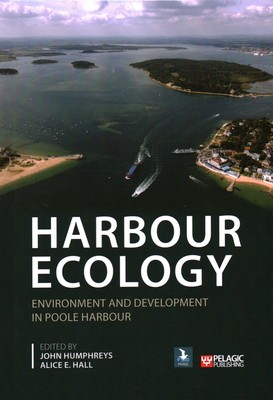
- We will send in 10–14 business days.
- Publisher: Pelagic Publishing Ltd
- ISBN-10: 1784274038
- ISBN-13: 9781784274030
- Format: 17 x 24.4 x 1.8 cm, kieti viršeliai
- Language: English
- SAVE -10% with code: EXTRA
Harbour Ecology (e-book) (used book) | bookbook.eu
Reviews
Description
Poole Harbour is protected and recognised, both nationally and internationally, for its ecological importance. However, it has also been classified as polluted and 'eutrophic'. These twin designations - protected yet polluted - exemplify the condition of many English estuaries, making Poole Harbour a useful case study for elucidating the circumstances behind this apparent paradox.
This book consists of four main parts. Part I, 'Background', provides a broad introduction to the harbour in terms of its pre-historical and historical significance for human communities and a conceptual overview of its modern character and uses. Part II, 'Ecology', contains chapters on subjects ranging from plankton to mammals. Insofar as they also consider anthropogenic aspects of the ecology, these contributions anticipate the remaining sections of the book, which deal specifically with aspects of the ecological service industries supported by Poole Harbour. Part III, 'Fisheries', covers recreational and commercial fishing and aquaculture, examining economic value and key shellfish species. Part IV, 'Water Quality', addresses those industries for which the harbour's chemical and biological processes remediate various effluents, as well as some of the environmental consequences and noteworthy efforts to reduce such impacts. Part V, 'Conclusion', by the editors looks at certain general shortcomings of environmental legislation and regulation in the case of Poole Harbour.
A central concern throughout is the question of sustainable development in coastal estuarine and marine contexts, making this far-reaching study relevant well beyond the bounds of its primary geographical focus.
EXTRA 10 % discount with code: EXTRA
The promotion ends in 23d.02:18:50
The discount code is valid when purchasing from 10 €. Discounts do not stack.
- Publisher: Pelagic Publishing Ltd
- ISBN-10: 1784274038
- ISBN-13: 9781784274030
- Format: 17 x 24.4 x 1.8 cm, kieti viršeliai
- Language: English English
Poole Harbour is protected and recognised, both nationally and internationally, for its ecological importance. However, it has also been classified as polluted and 'eutrophic'. These twin designations - protected yet polluted - exemplify the condition of many English estuaries, making Poole Harbour a useful case study for elucidating the circumstances behind this apparent paradox.
This book consists of four main parts. Part I, 'Background', provides a broad introduction to the harbour in terms of its pre-historical and historical significance for human communities and a conceptual overview of its modern character and uses. Part II, 'Ecology', contains chapters on subjects ranging from plankton to mammals. Insofar as they also consider anthropogenic aspects of the ecology, these contributions anticipate the remaining sections of the book, which deal specifically with aspects of the ecological service industries supported by Poole Harbour. Part III, 'Fisheries', covers recreational and commercial fishing and aquaculture, examining economic value and key shellfish species. Part IV, 'Water Quality', addresses those industries for which the harbour's chemical and biological processes remediate various effluents, as well as some of the environmental consequences and noteworthy efforts to reduce such impacts. Part V, 'Conclusion', by the editors looks at certain general shortcomings of environmental legislation and regulation in the case of Poole Harbour.
A central concern throughout is the question of sustainable development in coastal estuarine and marine contexts, making this far-reaching study relevant well beyond the bounds of its primary geographical focus.


Reviews